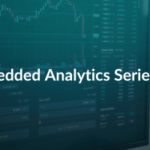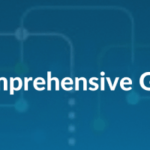
Introduction
In an era where data drives decision-making, embedded analytics has emerged as a strategic imperative for businesses. By seamlessly integrating data insights into applications, organizations empower users—from executives to front-line employees—to make informed choices. In this comprehensive analysis, we delve into how five leading BI platforms tackle embedded analytics, shedding light on their unique features and considerations.
Why Embedded Analytics Matters
Before we dive into the specifics, let’s understand why embedded analytics is more than just a
buzzword:
Contextual Insights:
Embedded analytics delivers relevant insights within the context of users’ workflows. Whether it’s a sales dashboard within a CRM system or real-time inventory data in an e-commerce app, context matters.
User Empowerment:
By embedding analytics directly into applications, organizations empower users to
explore data without switching tools. This seamless experience enhances productivity and decision-
making.
Competitive Edge:
Organizations that leverage embedded analytics gain a competitive edge. They can
respond swiftly to market changes, optimize processes, and drive innovation.
Key Evaluation Criteria
When evaluating BI tools for embedded analytics, consider the following critical factors:
Data Connectivity and Transformation:
How efficiently does each tool connect to various data sources?
What data transformation capabilities are available?
User Authentication and Access Control:
Robust authentication mechanisms ensure data security.
Fine-tune access permissions for different user roles.
Data Visualization Capabilities:
Which types of visualizations can you create?
Is the process intuitive for end-users?
Embedding Flexibility and Integration:
Explore APIs and methods for seamless analytics integration.
Insights from Leading Platforms
Let’s dive into the specifics of each BI tool:
1. Qlik Sense
Empowering Self-Service: Qlik Sense provides a user-friendly interface for self-service analytics. Its responsive design ensures a consistent experience across devices.
Deployment Options: Whether on-premises or in the cloud, Qlik Sense adapts to your infrastructure.
APIs for Customization: Developers can leverage APIs to embed analytics seamlessly into custom
applications.
2. Power BI
Visual Excellence: Power BI offers a rich array of customizable visuals, enhancing data storytelling.
Microsoft Ecosystem Integration: Seamlessly integrate Power BI with other Microsoft tools.
Embedding Capabilities: Leverage APIs to embed reports and dashboards within your applications.
3. Tableau
Visualization Mastery: Tableau’s extensive chart library caters to diverse analytical needs.
Community Support: A strong community contributes to knowledge sharing and best practices.
Straightforward Embedding: Tableau simplifies the embedding process.
4. Looker
Data Exploration Focus: Looker emphasizes data exploration and modeling.
Interactive Dashboards: Create engaging dashboards for end-users.
API-Driven Customization: Developers extend Looker’s functionality using APIs.
5. Sigma
Agile Cloud-Native Approach: Sigma’s cloud-native architecture ensures scalability and flexibility.
SQL-Based Interface: Business users can directly query data using familiar SQL.
In-App Analytics: Sigma offers embedding features for seamless integration.
Conclusion
Selecting the right BI tool hinges on your organization’s unique needs. Consider data sources, user requirements, and long-term goals. Each platform brings distinct strengths to the table, so choose wisely to unlock the full potential of embedded analytics in your applications.
It is important to rmember, it’s not just about the tool—it’s about how organizations can wield it to transform data into actionable insights.
Explore our Embedded Analytics Solutions.
GainInsights is a data analytics firm specializing in areas of Business Intelligence Modernization and Data Platform Engineering. With more than a decade’s experience of nurturing premium partnerships with Qlik, we have built a no-code embedded analytics solutions suite called SenseOps specifically for organizations leveraging Qlik Sense.
















